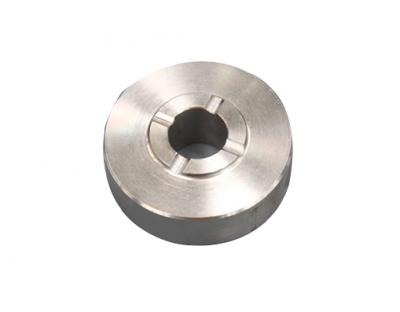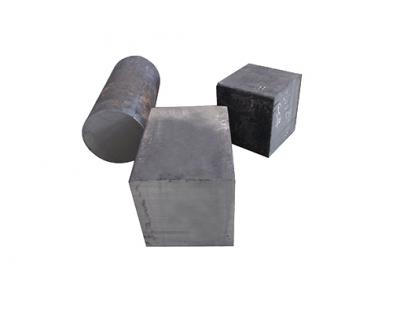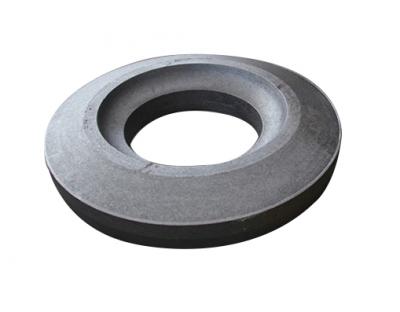Types of gear transmission and troubleshooting methods
Gear transmission is one of the most widely used transmission forms in mechanical transmission. Its transmission is relatively accurate, high in efficiency, compact in structure, reliable in operation and long in service life.
Gear classification
1. According to the relative position of the two shafts and the direction of the gear teeth, it can be divided into the following categories:
Spur gear drive
Helical Cylindrical Gear Transmission
Herringbone gear transmission
Bevel gear transmission
Helical gear crossed shaft transmission
2. According to the working conditions of the gear, it can be divided into:
Open gear transmission gear transmission, the gears are exposed, and good lubrication cannot be guaranteed.
Half-open gear transmission, the gear is immersed in the oil pool, with a shield, but not closed.
Enclosed gear drives, gears, shafts, bearings, etc. They are all installed in a closed box, with good lubrication conditions, dust and sand are not easy to enter, accurate installation, good working conditions of gear transmission, and are widely used in gear transmission.
How to deal with gear transmission failure?
【Faults caused by manufacturing errors】
When manufacturing gears, some typical errors usually appear, such as eccentricity, pitch error, base pitch error and tooth profile error. There are many reasons for these errors, such as machine tool motion errors, tool cutting errors, tools, workpieces, improper installation and debugging errors of machine tool systems, fixture errors, gear deformation caused by heat treatment internal stress, etc. When these errors of the gears are large, it will cause the slow and fast micro-inertia of the gear transmission to interfere with the rotation, causing shock, vibration and noise when the gear pairs mesh.
[Faults caused by assembly errors]
Due to the assembly technology and assembly method, the assembly error of "one end is in contact and one end is suspended" is usually caused when assembling the gear. The linear deviation of the gear shaft (concentricity, neutral error) and the unbalance of the gear. One-end contact or linear deviation of the gear shaft will cause the gear to bear the load unevenly, resulting in a single gear overload, resulting in local early wear, and even gear breakage in severe cases. Unbalanced gears can cause shock vibration and noise.
【Faults during operation】
1. Fracture of gear teeth
During gear transmission, the active force of the driving gear and the reaction force of the driven gear act on the opposite gear respectively through the contact points. The dangerous situation is the moment when the contact point is at the top of the gear tooth; at this time, the gear tooth acts like a cantilever beam, and the bending stress generated at the root of the tooth after loading is the largest. If due to sudden overload or impact overload, the tooth root is prone to overload fracture.
2. Tooth surface wear or scratches
The gear teeth slide relatively during the meshing transmission process, poor lubrication, uncleaned lubricating oil, deterioration of lubricating oil, low speed and heavy load, or poor heat treatment quality, etc. , can cause adhesive wear, abrasive wear, corrosion wear and scratches on the tooth surface.
3. Tooth surface fatigue
The so-called tooth surface fatigue mainly includes pitting and peeling of the tooth surface. The main cause of pitting is the micro-fatigue cracks caused by the pulsating contact stress on the working surface of the gear teeth. When lubricating oil enters the surface crack area, the entrance is first closed and then squeezed during the engagement process. The lubricating oil in the micro-fatigue crack area expands the crack area on the tooth surface under high pressure, causing the metal particles on the surface to fall off the tooth surface, leaving small pits to form tooth surface pitting. When the fatigue cracks on the surface of the gear teeth extend deeper and farther, it will cause large areas or large areas of tooth surface spalling.
4. Plastic deformation of tooth surface
When the gear material is soft and the transmission load is large, the plastic deformation of the tooth surface is easy to occur. When the friction force between the tooth surfaces is too large, the contact stress of the tooth surface will exceed the extrusion yield limit of the material, and the tooth surface material will enter a plastic state, resulting in plastic flow of the tooth surface metal. This causes the drive gear to form grooves on the tooth surface near the pitch line, and form ribs on the tooth surface near the pitch line, thereby destroying the tooth shape.





